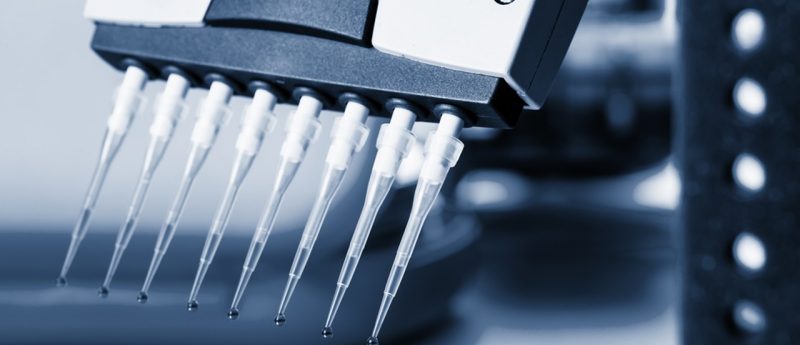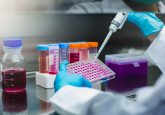Interview with Sufyan Maqbool (MedImmune) on capillary microsampling


Sufyan Maqbool is an Associate Scientist at MedImmune, Cambridge, UK. As part of the Clinical Pharmacology and DMPK group, he is responsible for the practical aspects of development, validation and execution of immunoassays to analyze samples from clinical and non-clinical studies, including GLP toxicology studies. He works in a GLP certified laboratory and consequently has experience working in accordance with the OECD principles of Good Laboratory Practice. He is currently in the final year of MSc Drug Discovery and Development with a final year project around capillary miscrosampling.
Tell us a little about your role at MedImmune and your work on capillary microsampling.
I am currently working in the Clinical Pharmacology & DMPK group at MedImmune (Cambridge, UK), which is a wholly owned subsidiary of AstraZeneca. We develop and validate pharmacokinetic (PK) and pharmacodynamics (PD) and immunogenicity assays to support preclinical and clinical trials of our large molecules.
Capillary microsampling (CMS) work was initiated as part of an MSc project to increase our investment in new technology, and revolutionise the way we perform animal studies and subsequent bioanalysis.
What are the main benefits to using CMS in animal testing?
CMS is a flexible technique for the collection and handling of small exact volume liquid matrices. CMS brings benefits from a ‘3Rs’ (‘Reduce, Refine & Replace’) perspective by significantly reducing animal numbers, reducing small volume and refining the process resulting in quicker and less stressful sampling.
Why is it important to implement the 3Rs in your work?
As a responsible organisation, MedImmune is always looking to adopt smarter and more ethical ways of working. We recognise the need to implement 3Rs wherever possible and the CMS technique helps in that goal as animal numbers can be drastically ‘reduced’ by sampling from main study animals, negating the need for satellite animals. Additionally, the technique is ‘refined’ by reducing inter-animal variability, as more samples are available from a single animal by the collection of significantly reduced blood volumes.
What led you to use the Gyrolab™ platform for your work in CMS?
The Gyrolab™ platform lends itself perfectly to small volume sampling techniques. It is an established platform within the group and is regularly used for assay development, validation, and sample testing. The automation that Gyrolab™ uses allows for less manual pipetting steps, quicker assay development and reduced analyst time compared to traditional plate-based technologies. The high throughput nature of the system is particularly attractive when meeting tight project deadlines without compromising assay sensitivity, dynamic range or data quality.
How have you used the Gyrolab™ platform to further your work?
PK samples taken using CMS were analyzed in a ‘universal’ PK assay, which was successfully developed and validated in-house on the Gyrolab™ platform. The assay uses universal reagents to detect human immunoglobulin G in any animal matrix allowing its use for preclinical studies up to dose range finding studies. The Gyrolab™ platform has allowed this method to be available for multiple sites and functions within MedImmune, allowing it to be used at multiple stages within the pipeline.
What are the key factors that need to be considered when deciding whether to use CMS?
CMS brings important ethical improvements to in vivo studies along with improved scientific and financial benefits. Consideration should be given to the bioanalytical platform of choice and the assay in which the samples will be analyzed; producing multiple replicates with the CMS technique could be problematic for some technologies and assays, especially when samples are not moderately diluted.
Are there any challenges that still need to be overcome?
It is important to ensure that the processing of the glass capillaries is performed in a consistent manner to minimize any variability, as successful implementation of the technique relies on an exact, defined volume. The analytical method of choice for the sample may be limited due to the sample volume and the subsequent minimal required dilution in the assay, which may render some bioanalytical methodologies incompatible with CMS. Additionally, a wider acceptance within the industry from regulators in the implementation of CMS for regulated studies would be beneficial.
Where do you see the future of microsampling?
The potential to monitor both PK and biomarkers in a single mouse, depending on the bioanalytical method, has the potential of adding important value in drug discovery and development. The application of CMS is likely to move into the space previously occupied by dried blood spot sampling methods following the recent position from the regulators. One could envisage an increased uptake of the technique for not only preclinical studies, whereby satellite animals will no longer be needed, but additionally in clinical trials, especially in juvenile populations, whereby invasive sampling can be traumatic and sample volume can be an issue.
Acknowledgements
Sufyan Maqbool would like to thank his work supervisor, Jo Goodman, for the constant encouragement and support all throughout the project. He would also like to thank Ove Jonsson for continuous help and advice.






